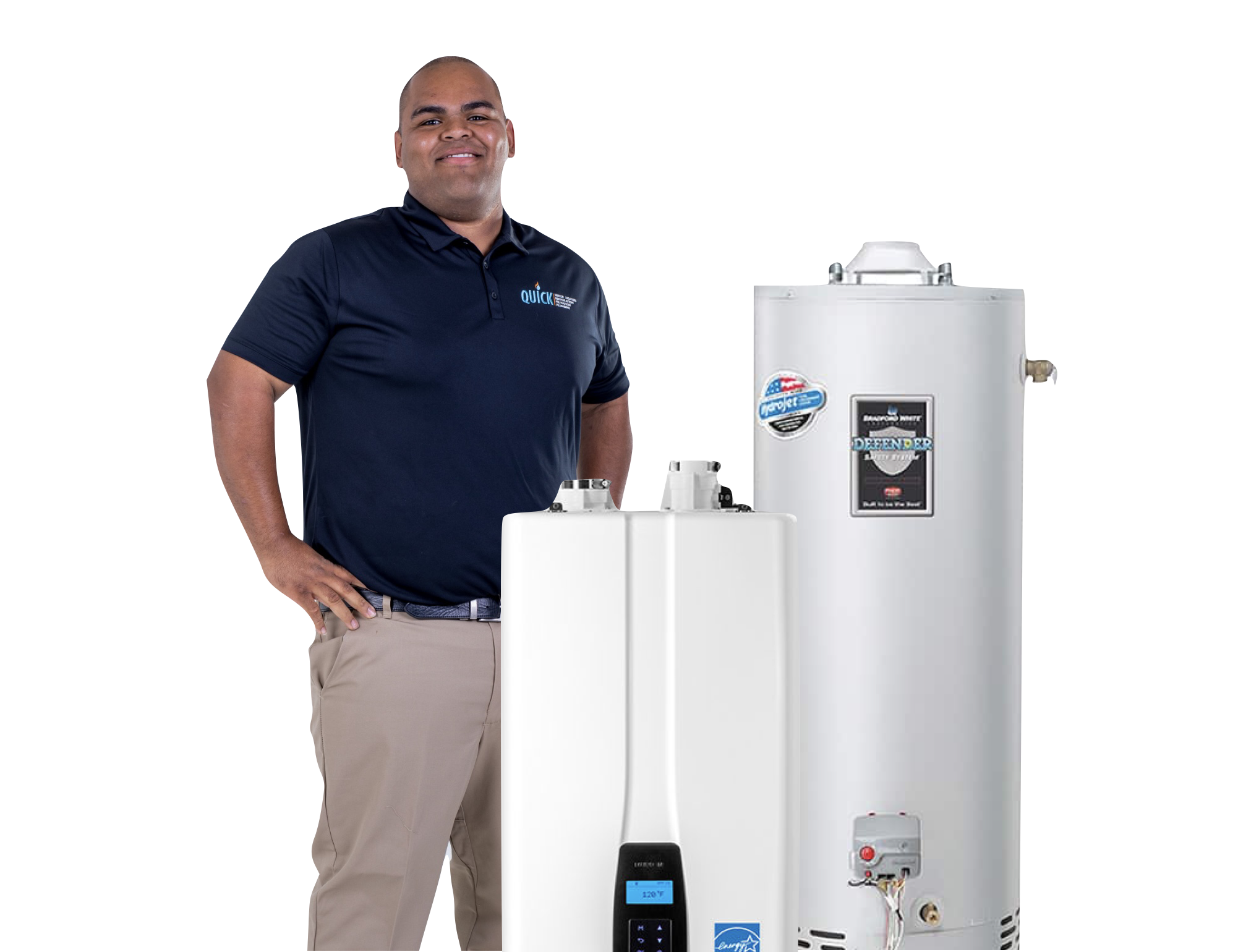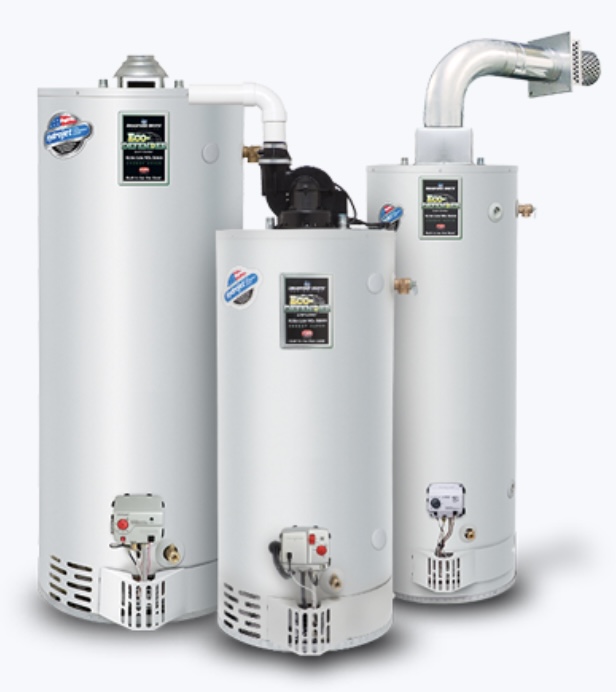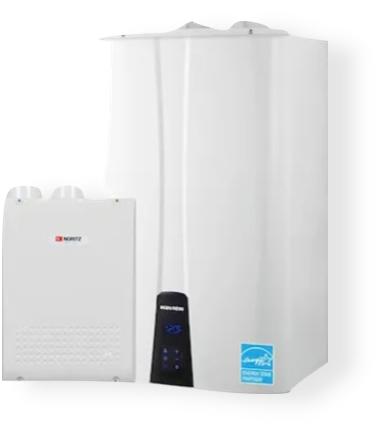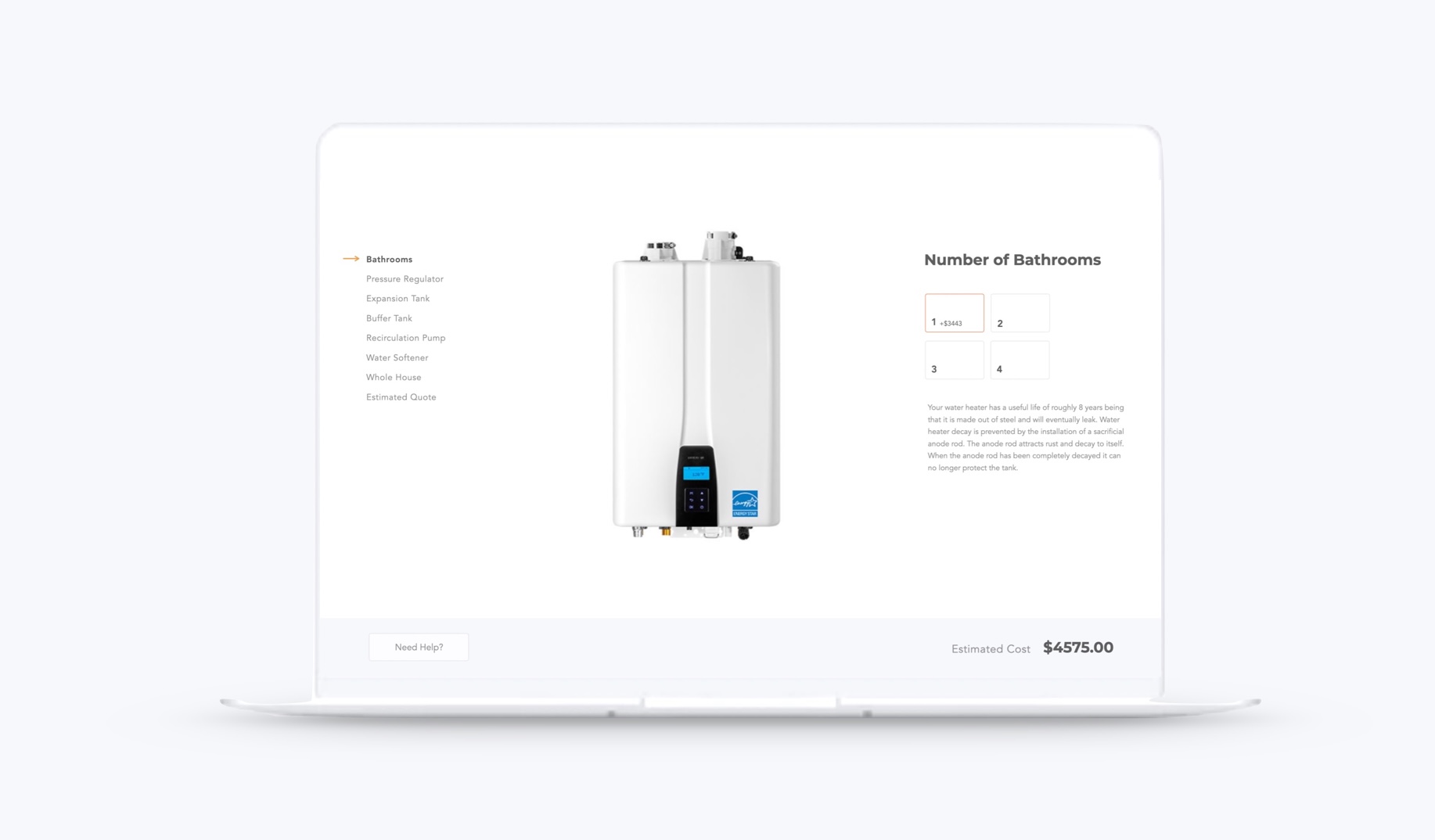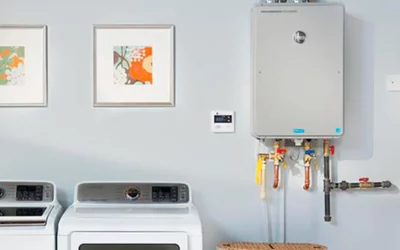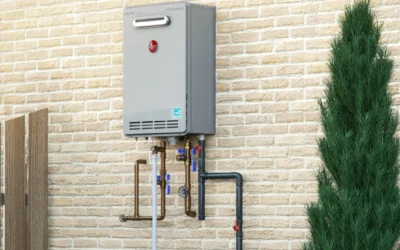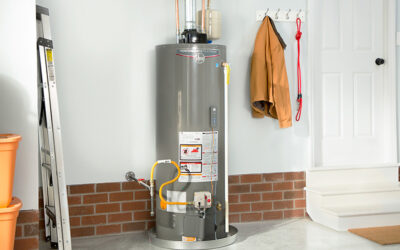When faced with a leaking hot water heater, many homeowners wonder if it is possible to repair the issue themselves. The answer to this question depends on the cause and severity of the leak. In some cases, simple repairs or replacements may solve the problem, while in other instances, professional assistance may be required. This overview will explore the common causes of water heater leaks, steps to repair a leaking water heater, and the importance of timely repair to prevent further damage and potential safety hazards.
Can You Repair a Leaking Water Heater?
Yes, it is possible to repair a leaking water heater.
Why is My Water Heater Leaking?
There are several reasons why a water heater may be leaking, including issues with the pressure relief valve, a faulty drain valve, or a corroded tank.
Common Causes of Water Heater Leaks
Common causes of water heater leaks can vary depending on the type and age of the water heater. Some common causes include:
- Corrosion: Over time, the tank of the water heater can corrode, leading to leaks. This is especially common in older water heaters.
- Pressure valve issues: If the pressure relief valve is faulty or malfunctioning, it can cause excess pressure to build up in the tank, leading to leaks.
- Loose or damaged fittings: If the fittings connecting the pipes to the water heater are loose or damaged, they can cause leaks.
- Sediment buildup: Sediment can accumulate at the bottom of the tank over time, leading to corrosion and leaks.
- Excessive water pressure: If the water pressure in your home is too high, it can put strain on the water heater and cause leaks.
If you notice any signs of a water heater leak, it is important to address the issue promptly to prevent further damage and potential water damage to your home. A professional plumber can help diagnose the exact cause of the leak and recommend the appropriate repairs or replacement if necessary.
Steps to Repair a Leaking Water Heater
If you have a leaking water heater, there are several steps you can take to repair it. Here is a list of the steps you should follow:
- Step 1: Turn off the power to the water heater. This can usually be done by flipping the circuit breaker in your electrical panel.
- Step 2: Shut off the water supply to the water heater. You can usually find the shut-off valve near the top of the unit.
- Step 3: Drain the water from the tank. Connect a hose to the drain valve at the bottom of the tank and open the valve to allow the water to flow out.
- Step 4: Locate the source of the leak. Inspect the tank and all the connections for any signs of leakage.
- Step 5: Determine the cause of the leak. Common causes include a faulty pressure relief valve, a corroded tank, or a loose connection.
- Step 6: Repair or replace the faulty component. Depending on the cause of the leak, you may need to replace a valve or tighten a connection.
- Step 7: Refill the tank with water. Close the drain valve and open the water supply valve to allow the tank to fill up.
- Step 8: Turn the power back on. Flip the circuit breaker back on to restore power to the water heater.
- Step 9: Check for any remaining leaks. Monitor the water heater for a period of time to ensure that the repair was successful and there are no new leaks.
By following these steps, you can effectively repair a leaking water heater and prevent further damage to your home.
Can You Repair a Hot Water Heater Leaking from Bottom?
Discover whether it is possible to repair a hot water heater that is leaking from the bottom and learn about the causes and steps to fix this type of leak.
Causes of Hot Water Heater Leaking from Bottom
A hot water heater leaking from the bottom can be caused by several factors. One of the most common causes is a faulty drain valve. If the drain valve is not fully closed or if it is worn out, it can result in water leaking from the bottom of the heater. Another possible cause is a leaking temperature and pressure relief valve. This valve is designed to release excess pressure and temperature from the tank, but if it is faulty or improperly installed, it can cause water to leak from the bottom. Additionally, sediment buildup at the bottom of the tank can also lead to leakage. Over time, sediment can accumulate and corrode the tank, causing leaks. It is important to identify the specific cause of the leak in order to properly repair the hot water heater.
Repairing a Hot Water Heater Leaking from Bottom
If you have a hot water heater that is leaking from the bottom, it is important to address the issue as soon as possible to prevent further damage. There can be several causes for a hot water heater leaking from the bottom, such as a faulty temperature and pressure relief valve, a cracked tank, or a loose drain valve. To repair a hot water heater leaking from the bottom, you should first turn off the power supply and shut off the water supply to the heater. Then, drain the tank completely by attaching a hose to the drain valve and opening it. Once the tank is empty, you can inspect the various components for any signs of damage or leaks. If you identify the source of the leak, you can either replace the faulty part or tighten any loose connections. However, if the tank itself is cracked or damaged, it may be necessary to replace the entire water heater. After completing the repairs, remember to refill the tank and check for any leaks before restoring power to the heater.
Can You Repair Leaking Hot Water Heater?
Yes, it is possible to repair a leaking hot water heater.
Signs of a Leaking Hot Water Heater
When it comes to identifying a leaking hot water heater, there are several signs to look out for. The most obvious sign is the presence of water around the base of the heater or pooling around the unit. You may also notice dampness or water stains on the floor or walls near the water heater. Another common sign is a decrease in hot water temperature or water pressure. If you hear unusual noises coming from the heater, such as popping or banging sounds, it could be a sign of a leak. Additionally, an increase in your water bill without any other explanation could indicate a leaking hot water heater. If you notice any of these signs, it’s important to take action and address the issue promptly to prevent further damage.
Steps to Repair a Leaking Hot Water Heater
If you are dealing with a leaking hot water heater, there are several steps you can take to repair it. Here is a list of steps to follow:
- Step 1: Turn off the power supply to the water heater. This is important to ensure your safety while working on the unit.
- Step 2: Shut off the water supply to the heater. Locate the valve on the cold water pipe leading to the heater and turn it clockwise to close it.
- Step 3: Drain the water from the heater. Connect a hose to the drain valve at the bottom of the unit and place the other end in a suitable drainage area. Open the valve and let the water drain completely.
- Step 4: Identify the source of the leak. Inspect the heater and look for any visible signs of leakage such as cracks, loose fittings, or corroded parts.
- Step 5: Repair or replace the faulty component. Depending on the cause of the leak, you may need to tighten or replace a valve, seal a crack, or fix a damaged part.
- Step 6: Reassemble the heater and turn on the water supply. Make sure all connections are secure and then slowly open the valve to allow water to fill the tank.
- Step 7: Restore power to the water heater. Switch on the power supply and set the temperature to the desired level.
- Step 8: Monitor the heater for any signs of leakage. Keep an eye on the repaired area and check for any new leaks or drips.
Following these steps should help you effectively repair a leaking hot water heater and prevent any further damage or water wastage.
Repair Water Heater Leaking from Bottom
When dealing with a water heater leaking from the bottom, it is crucial to identify the causes promptly and take the necessary steps to repair it to prevent further damage and potential hazards.
Causes of Water Heater Leak from Bottom
There are several possible causes for a water heater leak from the bottom. One common cause is a faulty drain valve, which can become loose or worn over time and allow water to escape. Another possible cause is a cracked or corroded tank, which can occur due to age or sediment buildup. Additionally, a leak may be caused by high water pressure, which can put excessive strain on the tank and lead to leaks. It is important to identify the specific cause of the leak in order to determine the appropriate repair method.
How to Fix a Water Heater Leaking from Bottom
If you have a water heater that is leaking from the bottom, it is important to address the issue as soon as possible to prevent further damage. Here are the steps to fix a water heater leaking from the bottom:
- Step 1: Turn off the power supply to the water heater. This can usually be done by switching off the circuit breaker or turning off the gas supply.
- Step 2: Shut off the water supply to the water heater. Look for the shut-off valve located near the top of the unit and turn it clockwise to close.
- Step 3: Drain the water heater. Attach a hose to the drain valve at the bottom of the tank and place the other end in a suitable drainage area. Open the valve to allow the water to drain out completely.
- Step 4: Inspect the water heater for any visible leaks or damage. Check the drain valve, temperature and pressure relief valve, and any other connections for signs of leakage.
- Step 5: Replace any faulty components or seals. This may involve replacing the drain valve, relief valve, or other damaged parts. Make sure to follow the manufacturer’s instructions for proper replacement.
- Step 6: Once all repairs are completed, close the drain valve and refill the water heater by opening the shut-off valve. Check for any leaks and ensure proper water flow.
- Step 7: Restore the power supply or gas to the water heater and allow it to heat the water to the desired temperature.
- Step 8: Monitor the water heater for any further leaks or issues. If the problem persists, it may be necessary to contact a professional plumber for further assistance.
By following these steps, you can effectively fix a water heater that is leaking from the bottom and ensure the proper functioning of your hot water system.
Water Heater Leak Bottom Repair
Learn how to repair a water heater leak at the bottom and prevent further damage to your unit.
Identifying a Water Heater Leak at the Bottom
When it comes to identifying a water heater leak at the bottom, there are a few key signs to look out for. One of the most obvious indicators is the presence of water pooling or dripping around the base of the water heater. You may also notice a decrease in hot water supply or a complete lack of hot water. Additionally, if you detect a foul odor or hear unusual noises coming from the water heater, it could be a sign of a leak. It is important to address a water heater leak promptly to prevent further damage and potential hazards.
Steps to Repair a Water Heater Leak at the Bottom
When it comes to repairing a water heater leak at the bottom, there are several steps that you can take to address the issue. Here is a step-by-step guide to help you through the process:
- Step 1: Turn off the power supply – Before attempting any repairs, make sure to turn off the power supply to the water heater. This will help prevent any accidents or electrical shocks.
- Step 2: Turn off the water supply – Locate the cold water supply valve connected to the water heater and turn it off. This will stop the flow of water into the heater and prevent any further leaks.
- Step 3: Drain the water heater – Connect a hose to the drain valve at the bottom of the water heater and place the other end in a suitable drainage area. Open the valve to drain out any remaining water from the tank.
- Step 4: Identify the source of the leak – Inspect the bottom of the water heater and identify the source of the leak. It could be due to a faulty drain valve, a leaking tank, or a damaged temperature and pressure relief valve.
- Step 5: Replace or repair the faulty component – Depending on the identified source of the leak, you may need to replace or repair the faulty component. Consult the manufacturer’s instructions or seek professional assistance if needed.
- Step 6: Test for leaks – Once the repairs or replacements are completed, turn on the water supply and check for any new leaks. Make sure all connections are secure and there are no signs of water leakage.
- Step 7: Restore power supply – Finally, restore the power supply to the water heater and monitor it closely for any further leaks or issues.
Following these steps should help you effectively repair a water heater leak at the bottom. However, if you are unsure or uncomfortable with performing these repairs yourself, it is always recommended to seek professional assistance.
Water Heater Leaking from Bottom Repair
Learn about the causes and steps to repair a water heater that is leaking from the bottom.
Why is My Water Heater Leaking from the Bottom?
There are several reasons why a water heater may be leaking from the bottom.
How to Repair a Water Heater Leaking from the Bottom
If you have a water heater that is leaking from the bottom, it is important to address the issue as soon as possible to prevent further damage. Here are the steps you can take to repair a water heater leaking from the bottom:
- Step 1: Turn off the power supply to the water heater. This can usually be done by flipping the breaker switch in your electrical panel.
- Step 2: Shut off the water supply to the water heater. You can usually find the shut-off valve located on the cold water inlet pipe.
- Step 3: Drain the water heater. Attach a hose to the drain valve at the bottom of the tank and open the valve to allow the water to drain out. Be cautious as the water may be hot.
- Step 4: Inspect the drain valve for any signs of leakage. If the valve is faulty, it may need to be replaced.
- Step 5: Check the temperature and pressure relief valve (TPR valve) for any leaks. If the valve is leaking, it may need to be replaced as well.
- Step 6: Examine the tank for any signs of corrosion or cracks. If there are any visible damages, it may be necessary to replace the water heater.
- Step 7: Once you have identified and resolved the source of the leak, close the drain valve and refill the tank with water.
- Step 8: Turn on the power supply and relight the pilot light if necessary.
- Step 9: Monitor the water heater for any further leaks. If the problem persists, it is advisable to seek professional assistance.
By following these steps, you can effectively repair a water heater that is leaking from the bottom. However, if you are unsure or uncomfortable with performing these tasks, it is always best to consult a professional plumber to ensure the job is done correctly and safely.
Water Heater Repair of Leak
Water heater repair of leak is an essential task to prevent further damage and ensure efficient functioning of the appliance.
Importance of Water Heater Leak Repair
The importance of water heater leak repair cannot be overstated. A leaking water heater can lead to significant damage to your home, including water damage, mold growth, and even structural issues. Ignoring a water heater leak can also result in higher utility bills due to wasted water and energy. Additionally, a leaking water heater can pose a safety risk, as it can increase the chances of electrical malfunctions or gas leaks. Therefore, it is crucial to promptly address and repair any leaks in your water heater to prevent further damage and ensure the safety and efficiency of your hot water system.
Professional Water Heater Leak Repair Services
When it comes to professional water heater leak repair services, Quick Water Heater is a top-rated company in San Diego County. We specialize in water heater installation, replacement, and repair, and our team of experts is well-equipped to handle any leaking water heater issues. With our transparent pricing and commitment to delivering the highest quality of service, you can trust us to efficiently diagnose and repair your water heater leaks. Whether it’s a minor leak or a more complex issue, our professional technicians have the knowledge and experience to provide effective solutions. Don’t hesitate to reach out to Quick Water Heater for reliable and professional water heater leak repair services.
Water Heater Stopped Leaking Before Repair
The heading “Water Heater Stopped Leaking Before Repair” discusses the reasons why a water heater may stop leaking before any repair is done and provides guidance on what actions to take in such a situation.
What to Do If Water Heater Stops Leaking Before Repair
If your water heater stops leaking before you have a chance to repair it, there are a few steps you can take to ensure that it remains in good working condition. First, it is important to check for any signs of damage or corrosion on the water heater. If you notice any issues, it is best to consult a professional to assess the situation. Additionally, you should regularly inspect the water heater to ensure that it is functioning properly and that there are no leaks or other issues. This can help prevent any future problems and extend the lifespan of your water heater.
Water Heater Stopped Leaking Without Repair
Learn about the possible causes of a water heater stopping to leak without any repairs and find out what actions to take in such a situation.
Possible Causes of Water Heater Stop Leaking Without Repair
Possible causes of a water heater stop leaking without repair can vary depending on the specific situation. One possible cause could be that the initial leak was minor and stopped on its own due to a temporary issue, such as a loose connection or a small crack that sealed itself. Another cause could be a fluctuation in water pressure, which may have temporarily resolved the leak. It is also possible that the leak was caused by a faulty component, such as a valve or a gasket, which may have spontaneously corrected itself. However, it is important to note that even if the leak has stopped without repair, it is still recommended to have a professional inspect the water heater to ensure that there are no underlying issues that could lead to future leaks or other problems.
Actions to Take If Water Heater Stops Leaking Without Repair
If your water heater stops leaking without repair, there are a few actions you can take to ensure it continues to function properly. Firstly, carefully monitor the unit for any signs of further leakage. Even if the leak has stopped, it’s important to stay vigilant as the issue may resurface. Secondly, consider contacting a professional plumber to inspect and assess the water heater. They can determine the root cause of the leak and provide recommendations for any necessary repairs or maintenance. Lastly, it’s advisable to schedule regular maintenance for your water heater to prevent any potential leaks in the future. This can include flushing the tank, checking the pressure relief valve, and inspecting the overall condition of the unit. By taking these actions, you can help prolong the lifespan of your water heater and avoid any unexpected leaks or damages.
FAQs
Get answers to frequently asked questions about water heater leaks and repairs.
1. How do I know if my water heater is leaking?
There are several signs that indicate a water heater is leaking, such as puddles of water around the unit, a decrease in hot water supply, or a hissing or popping noise coming from the heater.
2. Can a water heater leak fix itself?
Water heater leaks cannot fix themselves and will require repairs to prevent further damage.
3. Is it dangerous if my water heater is leaking?
While a leaking water heater may not always be immediately dangerous, it can lead to further damage and potential hazards if not addressed promptly and properly.
4. How much
When it comes to determining the amount of water that is leaking from your water heater, it is important to assess the severity of the leak. The exact measurement will depend on factors such as the size of the leak and the duration of the leak. If you notice a constant flow of water or a significant puddle forming around your water heater, it is recommended to shut off the water supply and contact a professional plumber for assistance. They will be able to accurately assess the situation and provide the necessary repairs or replacement.


